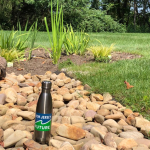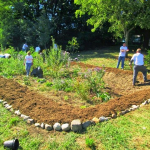New Jersey Future Blog
Greening the Garden State: These Three Towns Show You How!
September 15th, 2020 by Andrew Tabas
Green streets aren’t just for big cities like Philadelphia. They can help smaller cities like Camden and Hoboken and towns like Highland Park to meet flooding and stormwater challenges while providing community benefits. Camden, Hoboken, and Highland Park chose to use green streets strategies because they protect public health, improve water quality, manage stormwater runoff, reduce flood damage, provide social gathering spaces, and make municipalities more beautiful places to live, work, and play. While traditional streets use grey infrastructure such as pipes and gutters to transport stormwater, green streets use green infrastructure such as street trees and rain gardens to capture and treat stormwater at its source. Jersey Water Works and EPA Region 2 recently released New Jersey Green Streets Case Studies to spread awareness about green streets and their many benefits.
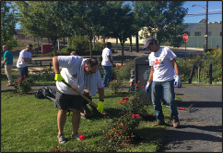
Trainees and volunteers during installation of Waterfront South rain gardens in Camden, New Jersey
Camden built a rain garden at the site of an old gas station to solve two public health challenges: combined sewer overflows and environmental contamination.
Since Camden has a combined sewer system, heavy rainfall can make sewers overflow and release untreated sewage into roads and waterways. Camden’s new rain garden captures stormwater, reducing the strain that storms put on the sewer system.
The old gas station was a brownfield site that leaked contaminants. As part of the construction of the rain garden, the builders removed contaminated materials, reducing these risks for the community. In addition, the project brought career development benefits to the community, as it incorporated training for landscapers and 300 young PowerCorps participants. “We created the PowerCorps Camden program to give jobs to at-risk Camden youth to maintain the rain gardens and parks, providing them with a job, a credential, life skills training, and future job placement,” says Andy Kricun, the former executive director of the Camden County Municipal Utilities Authority. “This can be replicated wherever a water utility seeks to be an anchor institution in their community, and to maximize benefit to the residents they serve.” The project is part of a larger project to build three riverfront parks and dozens of rain gardens across the city. The Camden rain garden was made possible by the Community Collaborative Initiative from the New Jersey Department of Environmental Protection.
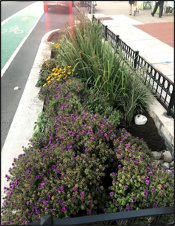
Rain garden with curb bump-out installed as part of Highland Park streetscape improvements.
Hoboken successfully transformed its main street, Washington Street, into a green street by building 15 rain gardens. The move will help to mitigate local flooding, a major issue for the city’s residents. Each rain garden can hold from 3,700 to 26,000 gallons of rainwater. Once secured in the rain garden, the water can infiltrate into the ground and replenish local groundwater instead of contributing to flooding. The rain gardens bring additional benefits to the community as well: they make Washington Street more attractive, increase accessibility for pedestrians through shorter crosswalks, and moderate the speed of traffic. Hoboken used two best practices to make sure that its project would be a success. First, after experiencing maintenance issues in previous rain gardens, Hoboken made a detailed maintenance manual and hired a contractor who is capable of keeping up maintenance to ensure that the rain gardens continue to absorb stormwater. Second, Hoboken used regular public meetings to keep the community informed and to build buy-in.
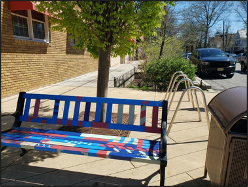
Bench installed as part of the Highland Park streetscape project.
Highland Park, a smaller community near the Raritan River, included green streets in its streetscape initiative on Raritan Avenue and the intersecting 3rd, 4th, and 5th avenues. The streetscape program improved the experience of pedestrians in the town by turning ordinary streets into “outdoor living rooms” with rain gardens and public benches. Along the way, Highland Park learned the critical lesson that it is necessary to train staff properly when maintaining a living system. Inexperienced staff can accidentally remove native plants instead of weeds. Despite this challenge, Highland Park’s leaders are glad that the community has put green infrastructure at the forefront. “Highland Park jumped at the opportunity to incorporate more environmentally-friendly infrastructure into our downtown streetscape design more than a decade ago,” said Mayor Gayle Brill Mittler. “The now well-established rain gardens add an attractive backdrop to our outdoor living rooms on corners of our main street, making our downtown a destination and vibrant gathering place for residents and visitors.”
The Jersey Water Works Green Infrastructure Committee and EPA Region 2 partnered to develop these case studies with help from local officials from Camden, Hoboken, and Highland Park. Jersey Water Works is committed to mainstreaming the implementation of green infrastructure throughout New Jersey. Our Green Streets in New Jersey Portfolio has additional examples of successful cases of green infrastructure. Has your town implemented a green street? Email Andrew Tabas (atabas njfuture
njfuture org) to connect.
org) to connect.
Related Posts
Tags: camden, CSOs, flooding, green infrastructure, green streets, hoboken, rain garden, Stormwater

